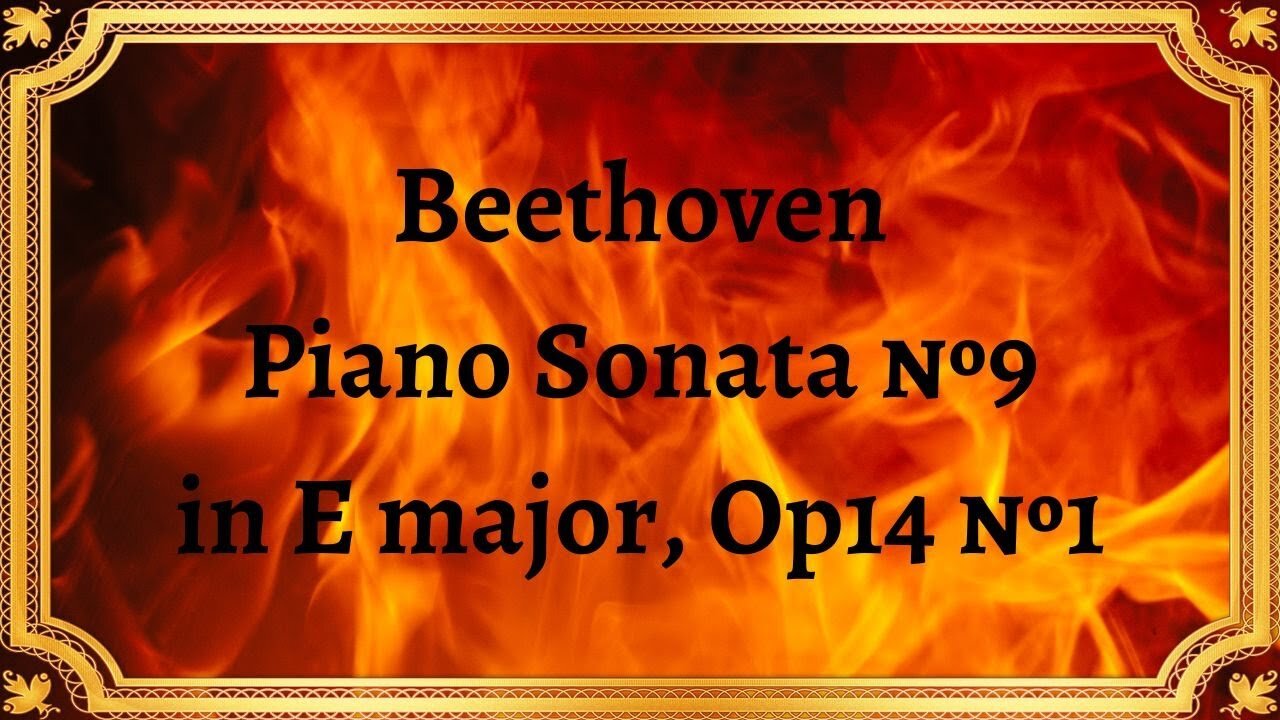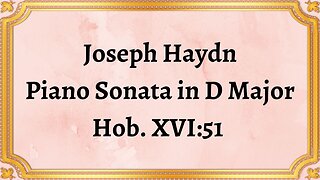Premium Only Content

Beethoven Piano Sonata No.9 in E major, Op.14 No.1
#classical_music #Beethoven #Piano_Sonata
Beethoven Piano Sonata No. 9 in E major, Op. 14 No. 1 is a captivating musical composition that showcases Ludwig van Beethoven's genius and artistic prowess.
Beethoven composed Piano Sonata No. 9 in E major, Op. 14 No. 1 in 1798, during his early period as a composer. This sonata represents a transitional phase in Beethoven's career, where he began to move away from the classical style of Mozart and Haydn and develop his unique musical language. It is a testament to Beethoven's artistic evolution and foreshadows the innovative works he would produce in the future.
The first movement, marked Allegro, is characterized by its lively and energetic nature. It opens with a joyful and catchy melody played by the right hand, which is then imitated by the left hand. Beethoven artfully explores contrasting dynamics, shifting between delicate passages and powerful chords, creating a sense of tension and release. The movement exhibits a clear sonata form structure, with an exposition, development, and recapitulation.
The second movement, marked Allegretto, provides a stark contrast to the first. It is a gentle and introspective piece, displaying Beethoven's ability to evoke deep emotions through music. The hauntingly beautiful melody is repeated and developed throughout the movement, demonstrating Beethoven's skill in creating variations. The serene and tranquil atmosphere of this movement provides a moment of respite before the energetic finale.
The final movement, marked Rondo: Allegro comodo, is a lively and spirited piece that showcases Beethoven's virtuosity as a pianist and composer. The catchy main theme, introduced at the beginning, undergoes various transformations and returns in a playful and exhilarating manner. Beethoven employs dynamic contrasts, syncopation, and rapid passages, infusing the movement with a sense of joy and excitement.
Beethoven Piano Sonata No. 9 in E major, Op. 14 No. 1 holds significant importance in the classical music repertoire. It embodies Beethoven's innovative spirit, foreshadowing the groundbreaking works he would later create. The sonata's exploration of form, expressive melodies, and contrasting emotions paved the way for Beethoven's later, more revolutionary compositions.
Throughout history, this sonata has captivated musicians and audiences alike, leaving a lasting impact on the world of classical music. Its influence can be seen in the works of subsequent composers who were inspired by Beethoven's groundbreaking approach to composition. Performances of this sonata continue to resonate with listeners, captivating them with its emotional depth and technical brilliance.
Beethoven Piano Sonata No. 9 in E major, Op. 14 No. 1 stands as a testament to Ludwig van Beethoven's musical genius and his ability to transcend the conventions of his time. Its historical significance, rich musical elements, and lasting impact make it a cornerstone of classical music repertoire.
-
 6:07
6:07
Classical music_Music Inspiration
29 days agoJoseph Haydn Piano Sonata in D Major, Hob. XVI:51
771 -
 1:13:00
1:13:00
Patriots With Grit
16 hours agoWill Americans Rise Up? | Jeff Calhoun
49.9K13 -
 14:55
14:55
Exploring With Nug
16 hours ago $11.85 earnedWe Found Semi Truck Containers While Searching for Missing Man!
65K9 -
 27:57
27:57
MYLUNCHBREAK CHANNEL PAGE
1 day agoOff Limits to the Public - Pt 3
151K70 -
 38:07
38:07
Michael Franzese
17 hours agoLeaving Organized Crime and Uncovering Mob in Politics: Tudor Dixon and Michael Franzese
116K15 -
 2:42:54
2:42:54
Jewels Jones Live ®
2 days agoAMERICA IS BACK | A Political Rendezvous - Ep. 111
90.7K50 -
 8:47:33
8:47:33
Due Dissidence
1 day agoLIVE: Workers Strike Back Conference ft. Chris Hedges, Jill Stein, Kshama Sawant, and More!
126K92 -
 8:36:37
8:36:37
Right Side Broadcasting Network
5 days agoLIVE REPLAY: CPAC 2025 Day Three with President Donald J. Trump - 2/22/25
476K104 -
 1:05:34
1:05:34
The Big Mig™
1 day agoConfirmed Kash Patel New FBI Director, Bring On The Pain |EP483
115K32 -
 53:59
53:59
Tactical Advisor
21 hours agoThe Vault Room Podcast 009 | Everyone Getting $5000?!
90.5K12